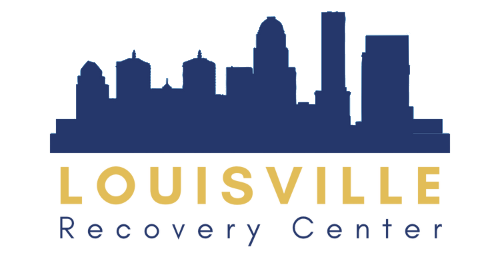What Are the Signs of Heroin Abuse?
Heroin abuse is a major issue in the United States, affecting thousands of individuals and families every year. This highly addictive opioid, derived from morphine, can quickly lead to dependence. Knowing how to recognize the signs of heroin abuse is crucial for getting help before it’s too late. In this article, we’ll explore the physical, behavioral, and psychological signs of heroin abuse so that you can identify it easier in a loved one.
Heroin Abuse in America
Heroin use has been a significant public health concern for years. In 2019, nearly 14,000 people died from heroin overdoses, according to the Centers for Disease Control and Prevention (CDC). Additionally, data from the Substance Abuse and Mental Health Services Administration (SAMHSA) showed that around 745,000 people aged 12 or older reported using heroin in 2020.
Physical Signs of Heroin Abuse
Heroin has immediate and visible effects on the body, making physical signs one of the easiest ways to recognize heroin use.
- Pinpoint Pupils – One classic physical sign of heroin use is unusually small, constricted pupils. This condition, known as “miosis,” occurs because heroin affects the central nervous system. Even in low light, a heroin user’s pupils will remain constricted.
- Track Marks – Individuals who inject heroin often have visible “track marks” on their arms, legs, or other areas. These small puncture wounds may be red, bruised, or scarred. Over time, track marks can become infected, leading to further health complications. Many users attempt to hide these marks by wearing long sleeves, even in warm weather.
- Weight Loss – Heroin suppresses appetite, leading to significant weight loss. Users may neglect eating, resulting in rapid physical deterioration. This, combined with low energy levels, can cause them to look noticeably unhealthy over time.
- Drowsiness or “Nodding Off” – After the initial euphoria from heroin, users often experience extreme drowsiness or “nodding off.” This can happen anywhere, even in inappropriate situations like during conversations or at work. This state of semi-consciousness can last for hours depending on the dose taken.
- Poor Personal Hygiene – As heroin use becomes a priority, many users neglect personal hygiene. This may result in poor grooming, infrequent bathing, and wearing dirty or inappropriate clothing. Heroin addiction takes up so much of a person’s focus that taking care of their appearance is often no longer a concern.
- Infections or Abscesses – People who inject heroin are at high risk for infections at injection sites, which can develop into painful abscesses. These infections can recur frequently in long-term users, signaling ongoing intravenous drug use.
Behavioral Signs of Heroin Abuse
Beyond the physical changes, heroin use also alters a person’s behavior significantly. These changes can be noticeable to friends and family members.
- Withdrawing from Social Life – Heroin users often start to isolate themselves from family and friends. They may stop participating in social activities they once enjoyed and prefer spending time with people who also use drugs or, in some cases, being completely alone.
- Secretive Behavior – Secrecy is another hallmark of heroin abuse. Users often lie about where they’ve been, what they’re doing, or who they’re with. You may notice them sneaking around or being unusually vague. Additionally, they might hide drug paraphernalia like needles, small plastic bags, or burnt spoons.
- Financial Problems – Heroin addiction is expensive, and users often face financial trouble as their drug habit worsens. You may notice that they’re constantly borrowing money or even resorting to stealing. Sudden financial strain with no clear explanation is a potential sign of heroin abuse.
- Lack of Interest in Hobbies – Another telltale behavioral sign is a sudden loss of interest in hobbies or activities that the person once enjoyed. Work, school, and social events may be neglected as the person becomes more consumed with obtaining and using heroin.
- Engaging in Criminal Activity – As the addiction grows, some heroin users may resort to illegal activities to support their habit. This could include shoplifting, dealing drugs, or committing other crimes that they would not normally engage in. Such behavior, especially if out of character, can be a warning sign of heroin abuse.
Psychological Signs of Heroin Abuse
Heroin also significantly affects a person’s mental state. These psychological signs can help you identify if someone is struggling with heroin addiction:
Extreme Mood Swings
Heroin can cause wild mood swings. A user may shift from a euphoric high to agitation or deep depression very quickly. These intense emotional changes are much more severe than typical mood swings and can be a major red flag.
Depression and Anxiety
Long-term heroin use is strongly linked to mental health issues like depression and anxiety. Many users experience intense feelings of guilt, worthlessness, and hopelessness, which may drive them to continue using heroin to escape these negative emotions.
Cognitive Decline
Chronic heroin use can impair cognitive functions like memory, focus, and decision-making. People addicted to heroin may struggle to concentrate on tasks or appear confused and disoriented, even during simple conversations.
Paranoia
In some cases, heroin users may develop paranoia, characterized by irrational fears or suspicions. They might believe others are watching or plotting against them, leading to increased isolation or confrontational behavior.
Why Recognizing the Signs Early Matters
Identifying heroin abuse early is crucial for getting help before serious health consequences occur. If you notice any of the signs mentioned above in a friend or loved one, it’s important to take action quickly. Treatment facilities like Louisville Recovery Center are equipped to help individuals struggling with heroin addiction through comprehensive detox programs, therapy, and support systems. Early intervention can make all the difference in preventing overdose and saving lives.
Treatment for Heroin Addiction
Treating heroin addiction is not easy, but recovery is possible with the right approach. Medication-assisted treatment (MAT) is often used to help manage withdrawal symptoms and cravings. MAT involves FDA-approved medications like methadone, buprenorphine, and naltrexone, which have been shown to increase the chances of long-term recovery.
Therapy also plays a vital role in recovery. Cognitive-behavioral therapy (CBT), group counseling, and 12-step programs help individuals address the root causes of their addiction, develop coping mechanisms, and build a support network for long-term recovery. For many, addressing co-occurring mental health conditions, such as anxiety or depression, is a key part of the treatment process.
Seeking Out Help For Heroin Addiction
Recognizing the signs of heroin abuse can help you act quickly to get someone the support they need. Whether it’s physical symptoms like track marks and drowsiness, behavioral changes like secrecy and financial issues, or psychological signs like mood swings and paranoia, these red flags shouldn’t be ignored.If you or someone you know is struggling with heroin addiction, reaching out for help is the first step. At Louisville Recovery Center, we offer tailored treatment plans to support individuals at every stage of their recovery journey. Early intervention is critical — don’t wait to get help.







